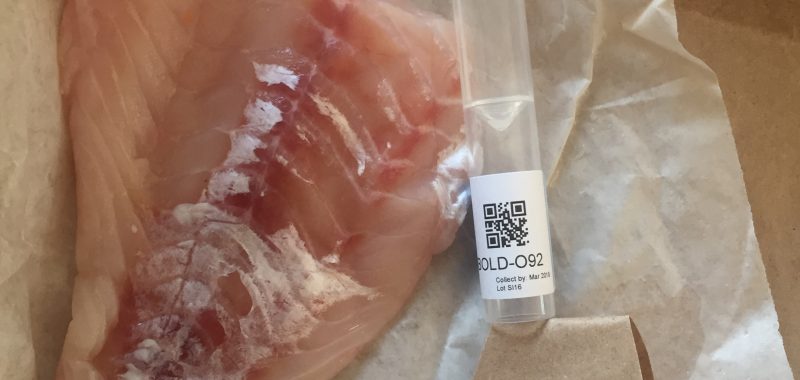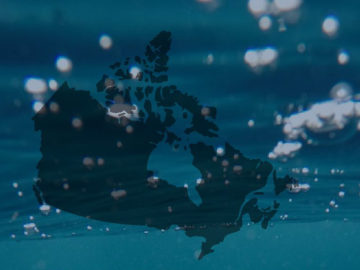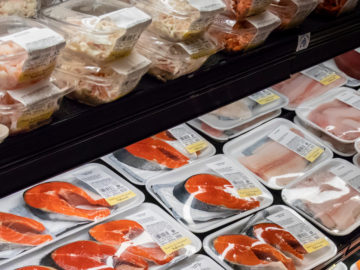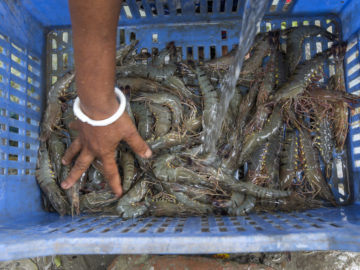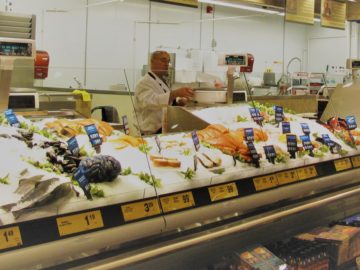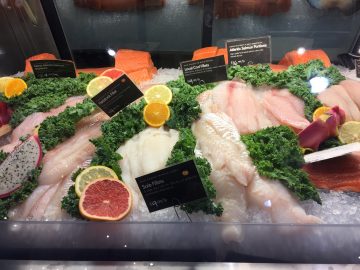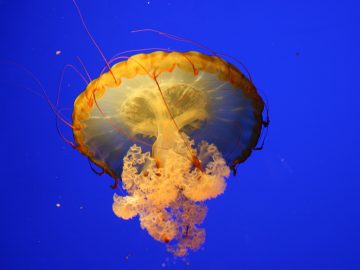The 2018 results are in: Almost 1 in 10 seafood products were mislabelled and only 1 in 5 were labelled according to best or near-best practices.
Seafood sold in the Canadian marketplace is subject to inadequate labelling regulations that allow for misrepresentation or fraud to occur along the supply chain. Under current regulations, consumers are left not knowing what species they are eating, what country it came from, and whether their purchases contribute to environmental degradation, or human right abuses.
Global best practice include six pieces of information on seafood labels:
- common name,
- species scientific name,
- geographic origin (the location of catch or of the aquaculture operation),
- country of last major transformation/processing,
- production method (whether farmed or wild), and
- gear type or farming method.
Canada currently requires only 1) for domestic seafood, and 1) and 4) for imported seafood.
In 2017 we partnered with LifeScanner to carry out a broad test of all kinds of seafood in many different retail stores – looking at both the accuracy and quality of Canada’s seafood labels. In 2018 we repeated the study, and worked with LifeScanner and 81 volunteer citizen scientists to assess the quality and accuracy of retailers’ seafood labelling, turning the data into an index from which we can track improvements. Based on our 2017 results, we focused this round of testing on major retailers and the most challenging products that are commonly available in the Canadian marketplace (i.e. cod, sole, snapper/rockfish, wild salmon and farmed shrimp). Volunteers sent the DNA samples and pictures of the seafoods’ labels in to LifeScanner.
Our dedicated citizen scientists submitted 272 samples, which represented 123 unique products, from 85 individual stores belonging to Canada’s seven major retailers.
Labelling accuracy
Almost one in ten unique seafood products had samples that were determined to be mislabelled. This might not initially seem like a lot, but it adds up to a significant problem considering we focused on seafood sold in large volumes by Canada’s biggest retailers. Mislabelled products had a common name that did not match the Canadian Food Inspection Agency’s (CFIA) Fish List guidelines for acceptable common or market name for that species.
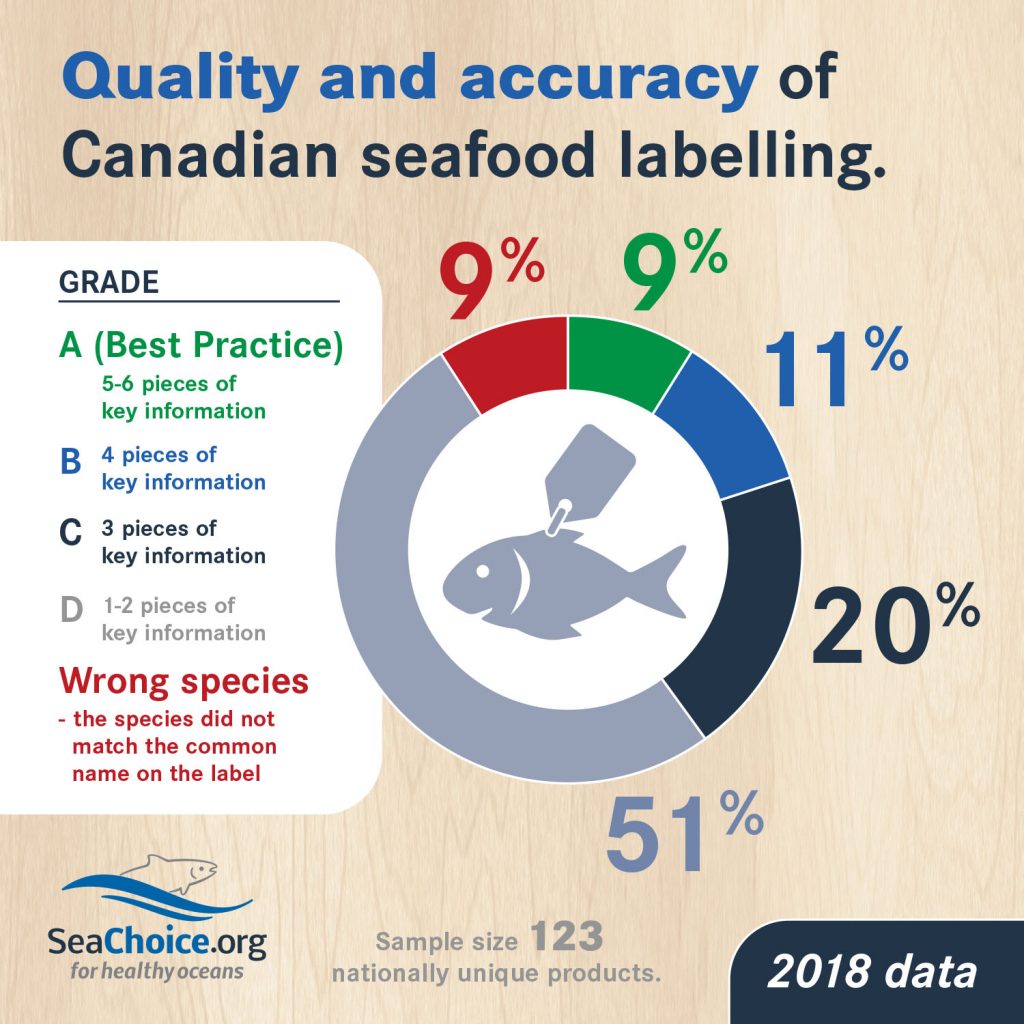
Seafood mislabelling can occur anywhere along the supply chain and it can be hard to determine at which point the mistake was made. The seafood mislabelling we identified can be divided into three main types: common name confusion, closely related species confusion, and clear species substitution.
Common name confusion can occur where CFIA has different naming guidelines for different species within a species group. For example ten species of rockfish from Canada’s Pacific waters can be labelled under the common name ‘Pacific snapper’, but eighteen species of rockfish are not permitted to use this name.
Closely related species confusion can arise when species are mislabelled even though they are not caught in the same fishery, or even the same ocean. For example, we found samples where Atlantic cod (Gadus morhua) was labelled as Pacific cod (Gadus macrocephalus).
The final type of mislabelling was species substitution, when one species is substituted for another in a way that is untruthful or misleading, even if it happened by accident. For example, “wild Pacific sole” that turned out to be Atlantic cod (Gadus morhua).
We would like to reiterate that these instances of mislabelling might not be due to actions by the retailers themselves, but they are ultimately responsible for ensuring their products are properly labelled. This is why good seafood traceability systems are essential for correct naming. We have shared our results with each retailer so they can try to find out what went wrong.
Labelling quality
Similar to our 2017 results, our more focused 2018 sampling revealed that retailers are doing a relatively good job of telling Canadians whether their seafood is wild caught or farmed. However, only one quarter of the products had labels indicating where the product was fished or farmed, just over 1 in 10 products indicated a scientific name, and less than 1 in 10 specified a production method. Canadians continue to eat in the dark when it comes to our seafood.
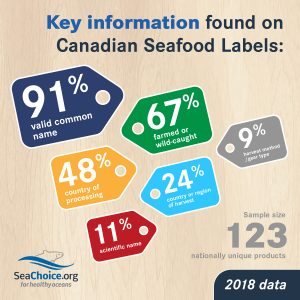
We are going to be working with retailers to improve the key information they include on seafood labels, and are continuing our work with the Canadian government to try to raise the bar on their requirements for seafood labelling. You can learn more about our efforts here.
If you want to help, you can let your retailer know you want better seafood labelling by speaking to them in store or by tweeting them and using the tag #SeafoodProgress. You can also find suggested tweets for each retailer on their Seafood Progress profile and message them that way.
